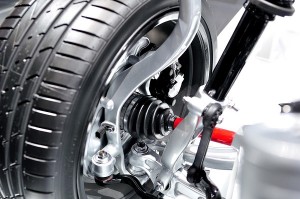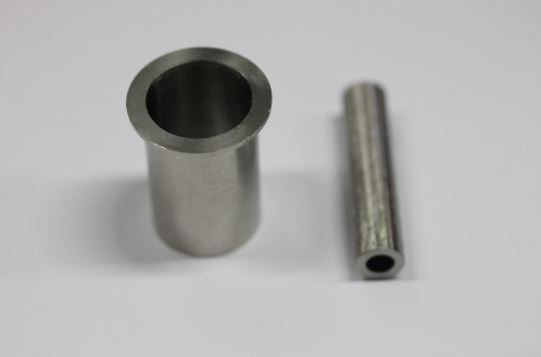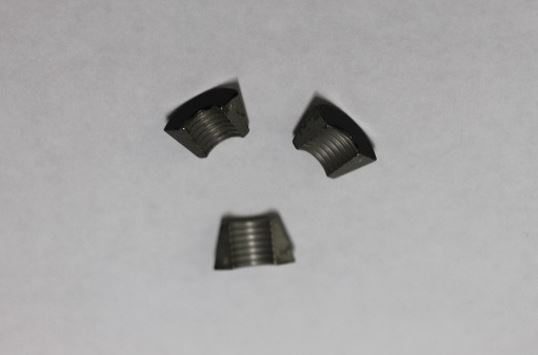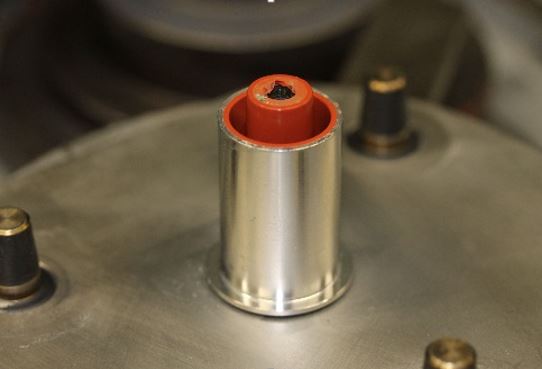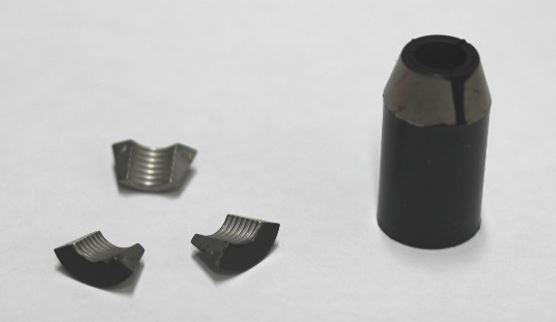Making a rubber-to-metal bonded part takes tons of attention to detail. It requires having a thorough plan before molding the part as well as a working knowledge of applications.
We walk you through selecting the metal, selecting the appropriate rubber for the application, and making sure you have the correct adhesive package.
Selecting the Right Metal
There are many types of metal to choose from. If the part is being used for a critical corrosive application, use stainless steel. Brass is very common for propane or natural gas applications. Common steel can be used to reduce part cost, while the adhesive package can be used to give a protective coating for weathering. Injection-molded metal (which is then sintered) can also be used. In some cases, plastic may be substituted to reduce cost or help with corrosion issues.
Some examples:
Two Part Rod Bushing
Three Piece Molded Insert
Using the Right Rubber
The most critical aspect of making this type of part is making sure the rubber compound meets the performance criteria of the part design. Can the rubber hold up to any fluid contact? Different types of rubber can swell in certain fluids.
Using a Chemical Compatibility Guide is useful for making sure the rubber will not have excessive swell. Swell forces can destroy the bonding of a rubber to metal part which will cause bond failure. Many bonded parts are used as isolation dampeners. Silicone and natural rubber are typically used to absorb vibration energy. The loss modulus or Tan δ of these polymers are generally low, making them good for vibration insulators.
FKM or Viton™ have very low outgassing, so they’re good for critical aerospace applications. Fluorosilicones can be used in a wide temperature range, while giving good compatibly to most fluids. Of course, NBR or HNBR compounds are the workhorses for automotive applications that come into contact with fuels and oils.
Selecting the Appropriate Adhesive Package
Traditional rubber-to-metal bonded parts are used as a primer to adhesive bonding systems. These systems are sprayed on to the metal as layers. The sprayed metal is then inserted into the mold cavity and during the vulcanization of the rubber, the rubber bonds to these adhesive systems. Normally without any bonding agent, the rubber would peel off with ease. ASTM D429 is way to measure the strength of this bond.
There are at least three main type of systems:
One-Coat: This would be a primer and over coat all in one spray. This minimizes the processing time, increase output and reduces cost.
Two-Coat: These are more robust systems. They can produce more resistance to fluid and chemical immersions, give better resistance to corrosion attack and perform better for dynamic and static fatigue.
Water-Based: Eliminates the used of solvents to dilute the systems which means lower hazard risk to employees, lower VOC emissions and easier storage.
Cilbond is one of the leading manufacturer of these types of systems. Its numerous product offerings allow you to bond to a wide range of metals as well as rubber mating parts. Traditional methods of applying these coatings are spraying or dipping. The product is diluted for the correct coating method. Some chemicals used for dilution is MEK, Toluene or water. The goal is to get the right number of solids on the metal to allow for the best possible adhesion.
Applications that require micro-molding may have lesser amounts of solids than automotive mounts. There will be some fine tuning to get the right adhesive amount so that the parts adheres while still can be molded. Excessive adhesive can cause mold foul and require constant cleaning of the mold.
Molding
Transfer molding is commonly used for these types of applications. This allows for cavities to free float inside the tooling. This is required so the cavity can move to allow for standard metal tolerance. Two-plate designs can lead to higher flash or cavity damage if the insert changes size due to tolerance.
Three Cavity Insert molded Design
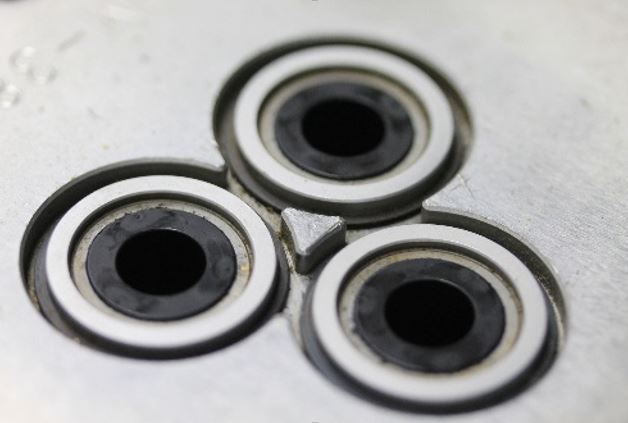
Three Plate Transfer Mold in Press
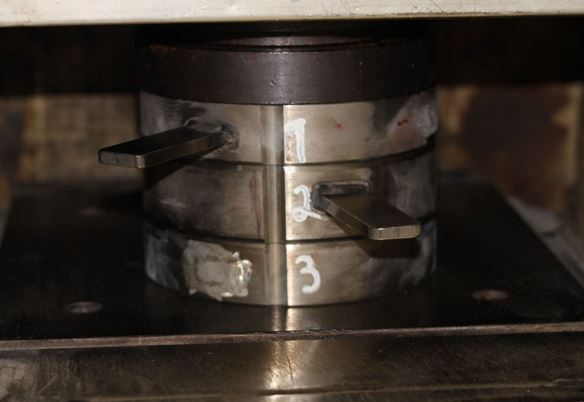
Final Product and Helpful Hints
Urethane Grip
As discussed, there are many factors that go into making the best rubber to metal parts. Some additional ideas to make a more robust part are provided below.
- Use of plasma chambers: Plasma helps remove any residues left on the inserts that might degrade the adhesion bond. Some plastic it can create hydroxyl groups at the surface that help when using water based adhesives.
- Metal etching: To increase the surface area of the metal, etching the surface can create micro pours that improve bonding. Sand blasting the surface of the metal will greatly improve the adhesion. Chemical etching can also be used, but is increase the cost greatly.
- Mechanical Bonding: Some case mechanical bonds can be used to hold the rubber to the metal. Holes are designed completely through the metal. During the molding process the rubber fills the holes and cavity on each sides resulting in a mechanical bond. To make an adhesive bond more robust, ribs or cuts in the metal can be used to give both a mechanical and chemical bond.
- Self-Bonding Rubber Compounds: Chemical modifiers in the rubber can be used to create metal adhesion without the use of adhesives. Resorcinol has been used for a long time with adhesion of metal cord in automotive tires. Self-Bonding Liquid Silicone Rubber can bond directly onto plastics and metals. Momentive offers a LIM 8040 this is a self-bonding LSR that has been tested to USP Class VI medical.
Want to chat about rubber-to-metal bonded parts? Tweet us @AppleRubber.
